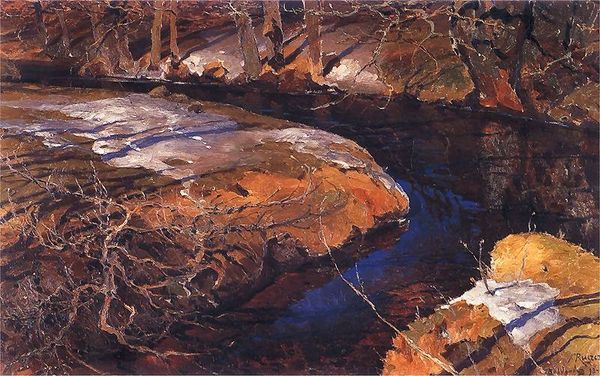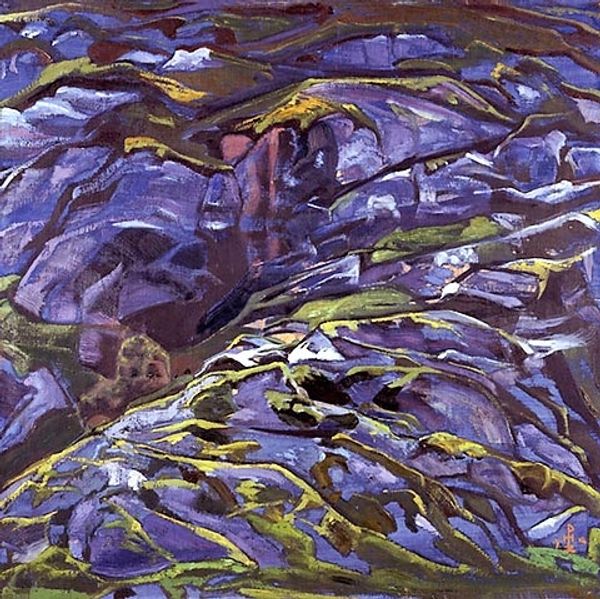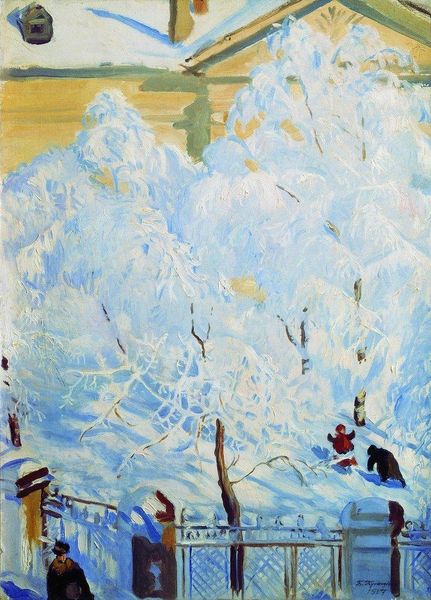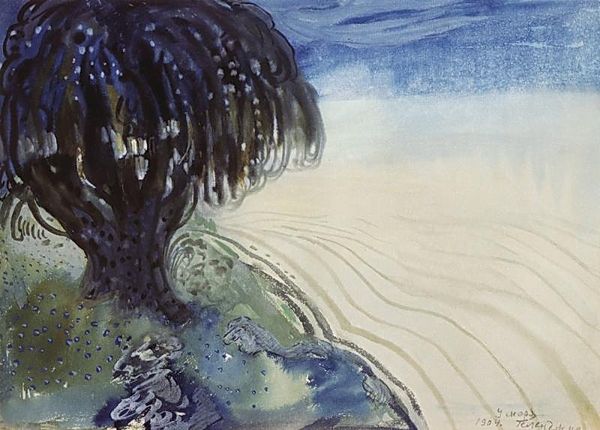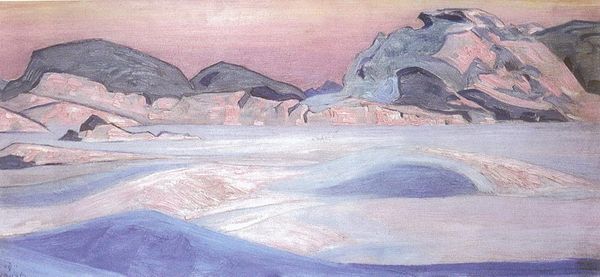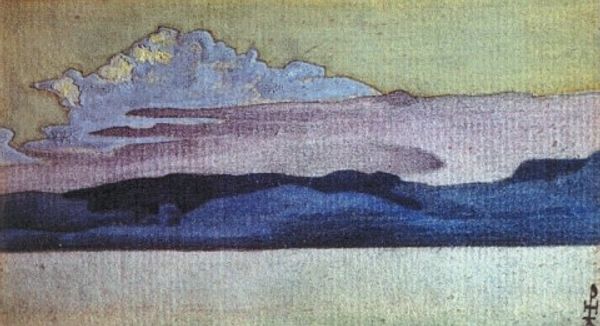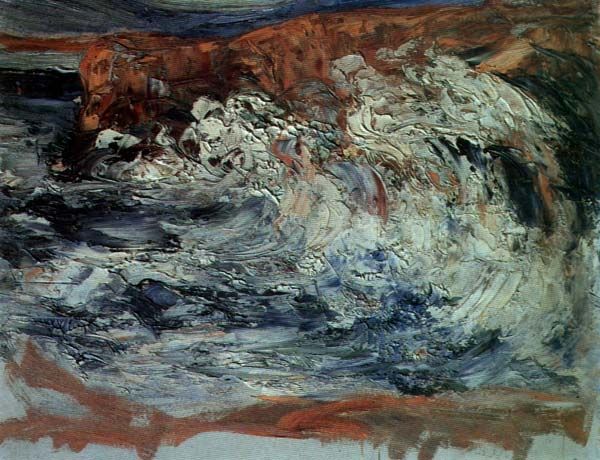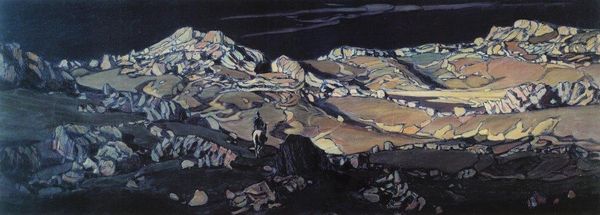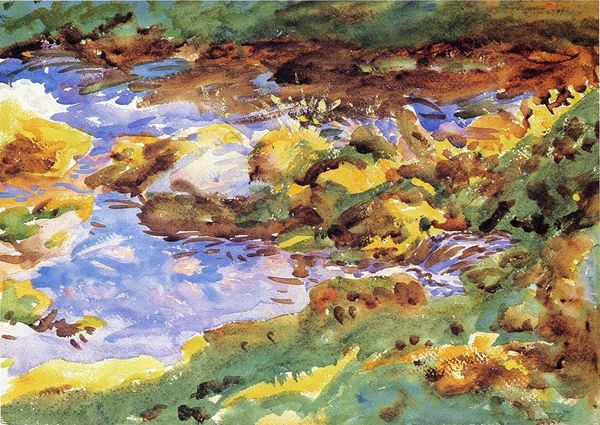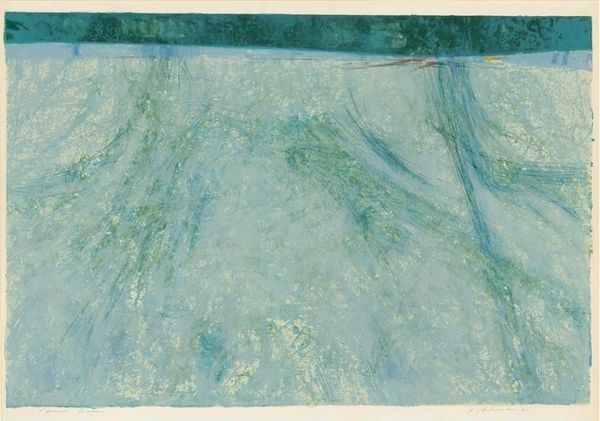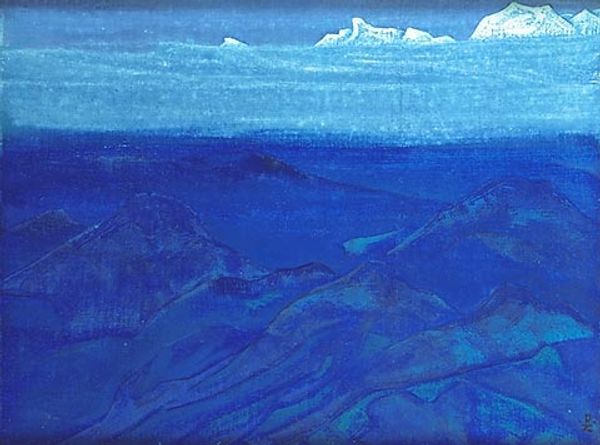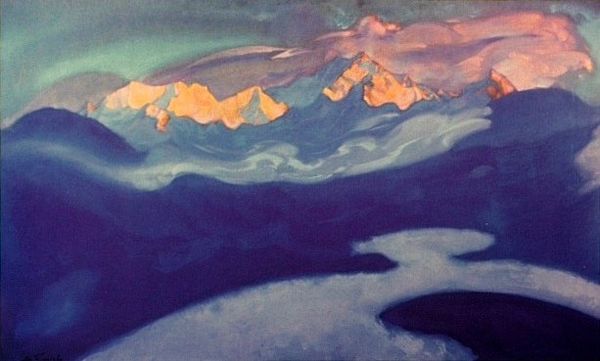
Copyright: Public domain
Editor: We're looking at Nicholas Roerich's "Venta. Finland.," painted in 1907. It's an oil painting, and I’m struck by how the cool blues and greens create a sort of melancholic atmosphere. What stands out to you? Curator: The melancholic feel you describe resonates with me. It's important to consider the historical context here. Roerich painted this during a period of intense social and political upheaval in Russia. Do you think the landscape, and especially its somber palette, might reflect anxieties about the changing socio-political landscape and Finnish identity amidst Russian influence? Editor: That's interesting; I hadn’t thought about it in those terms. So, the Finnish landscape isn't just a scene, but also symbolic? Curator: Precisely. Landscapes, particularly those rendered during times of political or social distress, can operate as powerful symbols. Roerich's choice to depict Venta could represent an ideal of stability and rootedness in a rapidly changing world. Also, consider the use of impressionistic and expressionistic techniques. How do these artistic choices enhance or perhaps distort the representation of Finnish nature? Does it mirror a yearning for authenticity or a grappling with cultural identity? Editor: I see what you mean. The brushstrokes seem to emphasize a raw, almost untamed quality. Now, looking at it through that lens, it feels like Roerich is actively making a statement. Curator: Absolutely. Art rarely exists in a vacuum. Investigating these social and historical layers adds immense depth to our understanding. Editor: This makes me realize how much more there is to consider beyond the immediate visual impression! Curator: Indeed, and it’s in these contextual details that a painting truly finds its voice.
Comments
No comments
Be the first to comment and join the conversation on the ultimate creative platform.

